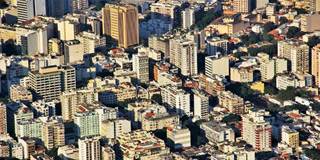After decades of rapid economic growth and per capita income gains, Brazil is struggling, with IMF forecasts indicating that the country’s GDP will decline by more than 7% in 2015-2016. This reversal of fortune can be explained by four key factors, some of which will be easier to address than others.
WASHINGTON, DC – After decades of rapid economic growth and per capita income gains, Brazil is struggling. According to the International Monetary Fund, the country’s GDP is poised to contract by more than 7% in 2015-2016. No single factor explains this reversal of fortune. Four do.
For starters, there is the structural trend of rising primary government expenditure as a share of GDP, which reached 36% in 2014, up from 22% in 1991. This increase reflected a political desire to address the poverty and inequality that had gone unaddressed during previous decades. To support the increase, Brazil’s government increased taxes on consumption and promoted progress toward labor-market formalization. Nonetheless, public investment, particularly in infrastructure, took a hit. In fact, with the exception of the 2005-2008 period, total investment as a share of GDP has remained below 20% since 1991.
The second factor shaping Brazil’s fortunes is the commodity-price super cycle. The upswing in commodity prices that began in 2004 brought many benefits for Brazil: external surpluses, the accumulation of foreign-exchange reserves, positive wealth effects, and higher investment in natural-resource-related sectors. Add to that exchange-rate appreciation and rising minimum-wage floors – not to mention public-sector disbursements indexed to the latter – and Brazil enjoyed a virtuous domestic cycle featuring positive feedback loops between demand for services and formal employment.

WASHINGTON, DC – After decades of rapid economic growth and per capita income gains, Brazil is struggling. According to the International Monetary Fund, the country’s GDP is poised to contract by more than 7% in 2015-2016. No single factor explains this reversal of fortune. Four do.
For starters, there is the structural trend of rising primary government expenditure as a share of GDP, which reached 36% in 2014, up from 22% in 1991. This increase reflected a political desire to address the poverty and inequality that had gone unaddressed during previous decades. To support the increase, Brazil’s government increased taxes on consumption and promoted progress toward labor-market formalization. Nonetheless, public investment, particularly in infrastructure, took a hit. In fact, with the exception of the 2005-2008 period, total investment as a share of GDP has remained below 20% since 1991.
The second factor shaping Brazil’s fortunes is the commodity-price super cycle. The upswing in commodity prices that began in 2004 brought many benefits for Brazil: external surpluses, the accumulation of foreign-exchange reserves, positive wealth effects, and higher investment in natural-resource-related sectors. Add to that exchange-rate appreciation and rising minimum-wage floors – not to mention public-sector disbursements indexed to the latter – and Brazil enjoyed a virtuous domestic cycle featuring positive feedback loops between demand for services and formal employment.